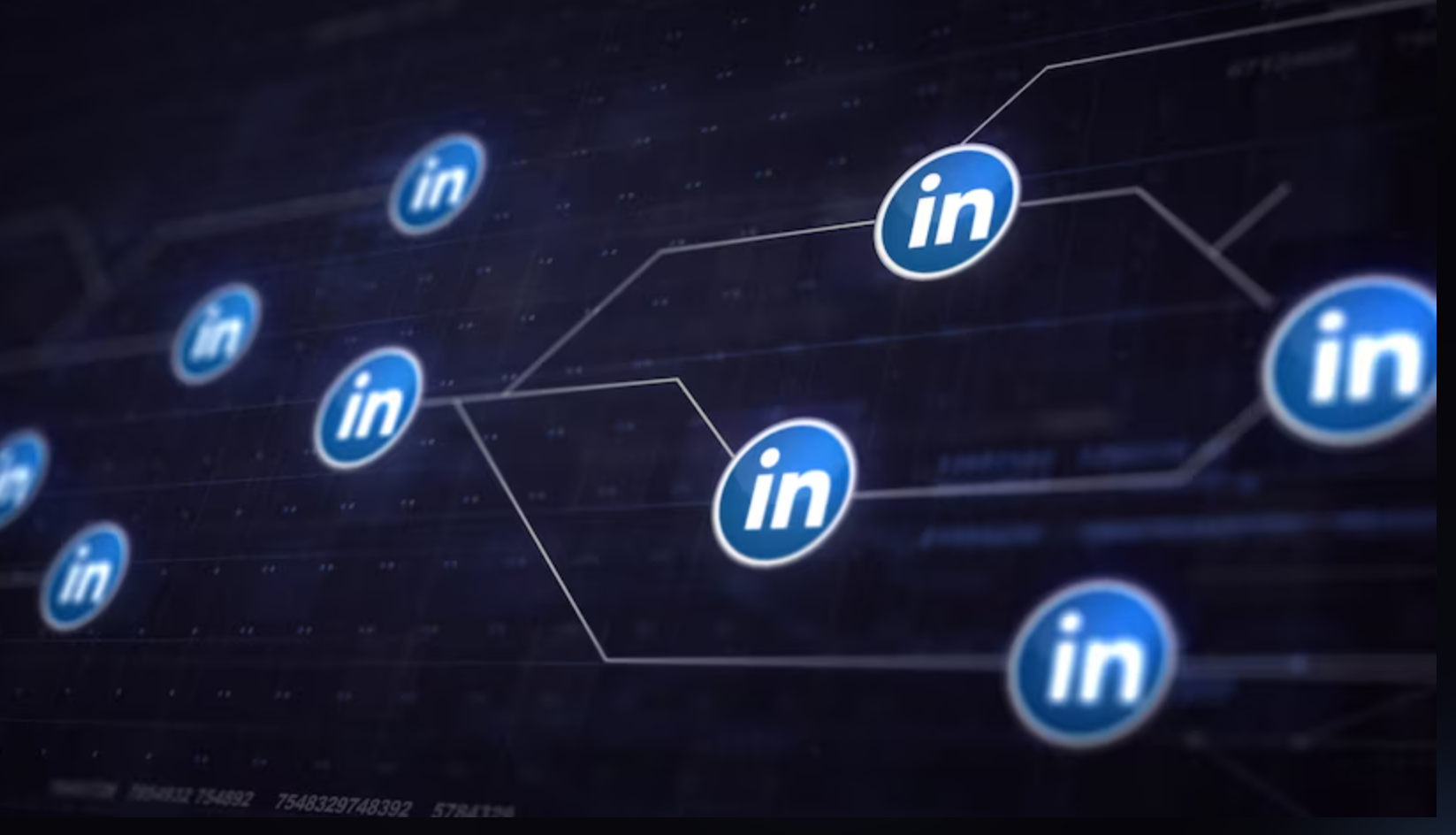1.0 Introduction to LinkedIn Organic Lead Generation
1.1 Why LinkedIn is a B2B Marketing Powerhouse
Let’s start with a little trivia: LinkedIn isn’t just a social network for sharing your professional wins and work anniversaries. Nope, it’s a veritable goldmine for B2B marketers. With over 900 million members, LinkedIn is where decision-makers, influencers, and professionals hang out. If you’re in the business of selling to other businesses, LinkedIn is your go-to platform. Why? Because it’s filled with people who are actively looking for business solutions, and guess what? You have the solution they need.
1.2 The Case for Organic Lead Generation
Now, why organic lead generation? Sure, paid ads have their place, but organic lead generation is like planting a tree—nurture it, and it will bear fruit for years. Unlike paid strategies, which can get expensive and have an expiration date, organic growth is sustainable. It builds trust and credibility over time, making your leads more likely to convert. Plus, who doesn’t love getting quality leads without spending a dime? It’s like finding money in your couch cushions, only better.
1.3 What You’ll Learn in This Blog
So, what’s on the menu today? We’ll cover everything from identifying your ideal customer profile (ICP) to optimizing your LinkedIn profile, crafting a killer content strategy, and growing your network. By the end of this blog, you’ll be a LinkedIn lead generation whiz, armed with all the tips and tricks you need to turn connections into conversions.
2.0 Understanding Your Target Audience on LinkedIn
2.1 Identifying and Defining Your Ideal Customer Profile (ICP)
Imagine trying to sell snow shovels in the Sahara—pretty tough, right? That’s what it’s like when you try to market to the wrong audience on LinkedIn. The first step in successful lead generation is knowing exactly who you’re talking to. Your Ideal Customer Profile (ICP) is a detailed description of the perfect customer for your business. This includes demographics, job titles, industries, company size, and pain points. If you’re targeting everyone, you’re targeting no one. Narrowing down your ICP is like using a sniper rifle instead of a shotgun—you’ll hit your target with precision.
2.2 The Importance of Niche Targeting on LinkedIn
LinkedIn isn’t the place for a broad approach. The more specific you are, the better your results. If your product is tailored for CFOs in the tech industry, focus on that niche. LinkedIn’s advanced search filters allow you to zero in on your niche audience. Use them to your advantage. Niche targeting not only improves your chances of getting noticed but also increases the likelihood that your leads will actually be interested in what you’re offering.
2.3 Tips for Using LinkedIn’s Search Features
LinkedIn’s search bar is your new best friend. Use it to find your ICP by filtering by industry, job title, location, and even company size. Take advantage of Boolean search techniques to refine your search results further. For example, if you’re looking for marketing directors in the healthcare industry, try searching “Marketing Director AND Healthcare.” This will bring up profiles that fit both criteria, saving you time and effort.
3.0 Optimizing Your LinkedIn Profile for Lead Generation
3.1 Profile Optimization Tips
Think of your LinkedIn profile as your digital storefront. You wouldn’t want your store to look like it’s been abandoned since the 90s, right? Your profile needs to be polished, professional, and inviting. Start with a killer headline—something more than just your job title. Make it clear what you do and how you help your clients. For example, “Helping Tech Startups Scale Through Data-Driven Marketing Strategies” is far more compelling than just “Marketing Specialist.”
3.2 Crafting a Magnetic ‘About’ Section
The ‘About’ section is your chance to shine. Use it to tell your story—who you are, what you do, and, most importantly, how you can help your prospects. Focus on the value you bring to the table, not just your achievements. Remember, it’s not about you; it’s about them. Include a call to action (CTA) at the end, inviting them to connect or reach out for more information. A CTA is like a polite nudge—sometimes, people just need a little encouragement to take the next step.
3.3 The Role of a Professional Profile Picture and Banner
Your profile picture should be professional, approachable, and aligned with your brand. No blurry selfies, please! Think of it as your first impression—it should say, “I’m someone you want to do business with.” And don’t forget the banner image at the top of your profile. Use it to reinforce your brand, whether it’s your company logo, a tagline, or an image that represents what you do. It’s prime real estate—make it count.
4.0 Content Strategy for LinkedIn
4.1 Types of Content That Perform Well
Content is king, but not all content is created equal. On LinkedIn, you want to focus on content that educates, informs, and engages your audience. Articles, thought leadership posts, and short videos tend to perform well. The goal is to establish yourself as an expert in your field, someone worth listening to. Share insights, tips, and case studies that provide real value. If you can make them think, “Wow, I hadn’t considered that,” you’re on the right track.
4.2 Creating Engaging and Conversion-Focused Content
Content that engages is content that converts. Tell stories that your audience can relate to. Use real-life examples and case studies to demonstrate how your product or service solves their problems. And don’t forget to include a CTA at the end of your posts. Whether it’s inviting them to download a free resource, attend a webinar, or simply connect with you, a CTA guides them on what to do next.
4.3 The Power of Storytelling on LinkedIn
People love stories, and LinkedIn is no exception. Storytelling makes your content relatable and memorable. Share your experiences, challenges, and successes. Whether it’s a client success story or a lesson you learned the hard way, stories help you connect with your audience on a deeper level. Plus, they make your content more engaging—who doesn’t love a good story?
4.4 Best Practices for Hashtags and Keywords
Hashtags and keywords are your ticket to visibility on LinkedIn. Use relevant hashtags to categorize your content and make it discoverable. But don’t go overboard—a handful of well-chosen hashtags will do the trick. As for keywords, sprinkle them naturally throughout your posts, especially in the headline and first few lines. This helps your content get found by people searching for topics you’re an expert in.
5.0 Building and Nurturing a Strong LinkedIn Network
5.1 Strategies for Growing Your Connections Organically
Growing your network on LinkedIn is like making friends at a business conference—it’s all about quality, not quantity. Start by connecting with people in your industry, your clients, and those who engage with your content. When sending a connection request, always personalize the message. Mention something you have in common or why you want to connect. A little effort goes a long way.
5.2 Engaging with Your Network
Once you’ve built a solid network, it’s time to engage. Comment on their posts, share valuable content, and participate in discussions. Engagement is the key to building relationships on LinkedIn. It shows that you’re not just there to sell but to contribute to the community. And when the time comes to pitch your services, these relationships will be your golden ticket.
5.3 The Power of Commenting and Sharing
Don’t just be a content creator—be a content engager. Commenting on and sharing others’ content is a great way to stay top of mind and build your presence on LinkedIn. Thoughtful comments add value to the conversation and help you stand out. And sharing relevant content from others shows that you’re plugged into the industry, not just focused on your own agenda.
6.0 LinkedIn Groups and Communities
6.1 How to Find and Join Relevant LinkedIn Groups
Imagine walking into a room full of your ideal clients, all chatting about the exact topics you specialize in. That’s what LinkedIn Groups can be—if you know where to look. Finding the right groups is like finding your tribe. Start by using LinkedIn’s search bar, but don’t stop at the first page of results. Dig deep. Look for groups that align with your industry, target audience, and expertise. For example, if you’re in B2B marketing, a group called “B2B Sales and Marketing Experts” might just be your new hangout. Once you find these groups, request to join, and don’t forget to introduce yourself when you get in—just like at a party, nobody likes a wallflower.
6.2 Engaging in Groups to Establish Authority and Generate Leads
Now that you’ve found your groups, it’s time to make your presence known. But remember, nobody likes the person who just talks about themselves non-stop. Engage with the group by commenting on discussions, answering questions, and sharing valuable insights. Think of it as planting seeds—each interaction builds your credibility and positions you as an expert in your field. And when people start to see you as an authority, guess what? They’ll come to you when they need your services. But remember, no hard selling. The goal here is to build relationships and trust, not to pitch on the first interaction.
6.3 Starting Your Own LinkedIn Group to Attract Leads
If you’re the kind of person who likes to host the party rather than just attend, why not start your own LinkedIn Group? Creating a group allows you to bring together like-minded professionals and potential leads around a specific topic. Choose a niche that’s relevant to your business but broad enough to attract a variety of members. For example, if your agency specializes in lead generation, a group titled “Lead Generation Strategies for B2B Marketers” could be a hit. As the group owner, you set the tone, lead discussions, and, most importantly, position yourself as the go-to expert. It’s like building your own little empire on LinkedIn.
7.0 Using LinkedIn’s Features for Lead Generation
7.1 Using LinkedIn’s Sales Navigator for Lead Generation
If LinkedIn is a treasure map, then Sales Navigator is the X that marks the spot. This premium tool is a game-changer for serious lead generators. With advanced search filters, you can zero in on your ideal prospects with laser precision. You can search by industry, company size, seniority level, and more. Plus, Sales Navigator lets you save leads and accounts, so you’re always one step ahead. It’s like having a secret weapon in your lead generation arsenal—one that helps you connect with the right people at the right time.
7.2 The Effectiveness of LinkedIn InMail for Reaching Prospects
Ever wish you could bypass the gatekeepers and talk directly to the decision-makers? That’s exactly what LinkedIn InMail allows you to do. InMail messages go straight to the inbox of your chosen recipient, even if you’re not connected. It’s like sending a VIP pass to your message, making it far more likely to get noticed. But here’s the catch—don’t waste this golden opportunity on generic pitches. Personalize your InMail, make it relevant, and keep it concise. The goal is to spark interest, not to give them your life story. A little creativity here can go a long way.
7.3 Using LinkedIn’s Native Tools like Polls and Events for Engagement
LinkedIn isn’t just about connecting—it’s about engaging. Native tools like Polls and Events are your secret sauce for driving interaction. Polls are a quick and easy way to gauge your audience’s opinions and preferences. Plus, they’re highly engaging, often prompting users to comment and share. For example, a poll asking, “What’s your biggest challenge in lead generation?” not only provides valuable insights but also opens the door to further conversation.
LinkedIn Events, on the other hand, are perfect for bringing people together—virtually, of course. Whether it’s a webinar, a product launch, or a live Q&A session, LinkedIn Events allow you to engage with your audience in real-time. Promote your event, invite your connections, and create buzz around it. And after the event, don’t forget to follow up with attendees—those are warm leads just waiting to be nurtured.
8.0 The Role of Thought Leadership in LinkedIn Lead Generation
8.1 How to Position Yourself as a Thought Leader in Your Industry
Becoming a thought leader on LinkedIn is like being the Rockstar everyone looks up to in your industry. But it doesn’t happen overnight. Thought leadership is about consistently sharing your expertise, insights, and vision. Start by identifying the topics you’re passionate about and that are relevant to your audience. Then, create content that showcases your knowledge—think articles, videos, and long-form posts. Share your unique perspectives and back them up with data, case studies, or real-world examples. Over time, as your content resonates with your audience, you’ll build a reputation as a go-to resource in your field.
8.2 The Benefits of Consistent, High-Quality Content
Consistency is key when it comes to thought leadership. It’s not enough to post a brilliant article once a year—you need to be showing up regularly. High-quality content not only keeps you top of mind with your audience but also builds trust. People are more likely to do business with someone they see as knowledgeable and reliable. Plus, consistent content creation signals to LinkedIn’s algorithm that you’re active and engaged, which can boost your visibility. So, make content creation a regular part of your routine, and watch your influence—and your leads—grow.
8.3 Case Studies or Examples of Successful Thought Leadership on LinkedIn
Let’s take a look at a few LinkedIn thought leadership success stories. Take, for example, Richard Branson. Yes, he’s already a big name, but his regular posts on leadership, entrepreneurship, and business trends consistently get thousands of engagements. Or consider a less famous example like Dave Gerhardt, a B2B marketing expert who built his brand by regularly sharing practical marketing advice and insights. His posts, often infused with humor and real-world experience, have helped him grow a massive following and cement his status as a thought leader in the marketing world.
9.0 Engagement Strategies to Convert Connections into Leads
So, you’ve built a solid network on LinkedIn, and your connection list is looking more impressive than a VIP guest list at a Hollywood party. But here’s the thing—those connections aren’t going to magically turn into leads unless you put in some work. It’s time to get strategic about engagement.
9.1 Techniques for Initiating Conversations with Potential Leads
Starting a conversation on LinkedIn is like sliding into someone’s DMs—but, you know, professionally. The key is to make it feel natural, not like you’re just there to pitch something. Begin by engaging with their content. Like, comment, or share their posts, and make sure your comments are thoughtful, not just “Great post!” Show genuine interest in what they’re saying.
When you’re ready to reach out directly, reference something specific about them—maybe a recent post they made or an article they shared. For example, “Hi Jane, I saw your post about the challenges in B2B lead generation and couldn’t agree more. I’d love to hear more about your thoughts on this. Do you have a few minutes to chat?” This approach shows that you’re paying attention and adds a personal touch to your outreach.
9.2 Crafting Personalized Messages that Resonate
Nobody likes getting those cookie-cutter messages that scream “copy-paste.” Personalization is your secret weapon here. Use the prospect’s name, mention something specific about their business, and align your message with their interests or pain points. The goal is to make them feel like this message was crafted just for them (because, well, it was).
For instance, instead of saying, “I’d like to connect to discuss how we can work together,” try something like, “Hi Mark, I noticed you’re focusing on expanding into new markets this year. We’ve helped companies in similar positions increase their lead generation by 30%. Could we set up a quick call to see if we might be a fit to help you too?” See the difference? It’s all about making the conversation relevant to them.
9.3 The Importance of Follow-Up and Nurturing Leads Over Time
So, you’ve had a great initial conversation—what’s next? Follow-up is crucial. In fact, it’s often where the magic happens. But remember, nobody likes a stalker. Your follow-ups should be timely and value-driven, not pushy.
For example, after an initial conversation, you might send a follow-up a week later saying, “Hi Sarah, I’ve been thinking about our conversation last week and came across an article that I think you’d find interesting [insert link]. Would love to hear your thoughts!” This keeps the conversation going without making it all about the sale.
And don’t give up after one or two tries. It might take several touchpoints before a prospect is ready to move forward. The key is to stay on their radar with valuable insights, resources, or simply a friendly check-in. Remember, you’re building a relationship, not just chasing a quick sale.
10.0 Tracking and Measuring LinkedIn Lead Generation Success
You wouldn’t embark on a road trip without a map (or GPS, for the modern traveler), right? The same goes for your LinkedIn lead generation efforts. Tracking and measuring your progress is essential to ensuring you’re on the right path and making the most of your efforts.
10.1 Key Performance Indicators (KPIs) to Track for LinkedIn Lead Generation
When it comes to LinkedIn, not all metrics are created equal. Sure, getting a lot of likes on a post feels good, but what does it really mean for your lead generation? Focus on KPIs that directly tie back to your goals.
Some key metrics to keep an eye on include:
- Connection Growth: Are you consistently growing your network with relevant connections?
- Engagement Rate: How much interaction are your posts and messages receiving? This includes likes, comments, shares, and direct messages.
- Conversion Rate: Out of the conversations you’re starting, how many are turning into actual leads or meetings?
- Profile Views: Are more people checking out your profile? This can indicate that your content is driving interest.
- Lead-to-Customer Rate: Ultimately, how many of these leads are turning into paying customers?
By keeping an eye on these KPIs, you’ll have a clear picture of what’s working and what needs tweaking.
10.2 Tools and Techniques for Measuring the Effectiveness of Your LinkedIn Strategy
You don’t need to be a data scientist to measure your LinkedIn performance, but you do need the right tools. LinkedIn’s own analytics tools are a great starting point. They provide insights into your post performance, profile views, and even how you rank among your connections.
For a deeper dive, consider using third-party tools like Shield Analytics or LinkedIn’s Sales Navigator’s reporting features. These can help you track engagement metrics over time, identify trends, and even benchmark your performance against industry standards.
And let’s not forget good old-fashioned spreadsheets. Sometimes, manually tracking your outreach and follow-ups in a CRM or spreadsheet can give you the granular data you need to see exactly where prospects are in your funnel.
10.3 How to Analyze Data to Refine and Optimize Your Approach
Collecting data is one thing—doing something with it is another. Regularly review your KPIs and look for patterns. Are certain types of content getting more engagement? Is your conversion rate higher with certain industries? Use these insights to refine your strategy.
For example, if you notice that video posts get more engagement than text posts, consider shifting more of your content creation efforts toward video. Or, if your messages are getting good responses but not leading to many meetings, you might need to adjust your follow-up strategy.
Remember, LinkedIn lead generation isn’t set-it-and-forget-it. It’s a dynamic process that requires continuous tweaking and optimization. But with the right metrics in hand, you’ll be well-equipped to make data-driven decisions that propel your lead generation efforts forward.
11.0 Common Mistakes to Avoid in LinkedIn Lead Generation
Ah, LinkedIn—a treasure trove of professional connections and potential leads. But like any treasure hunt, there are traps along the way. Let’s make sure you’re not the one stepping into them.
11.1 Pitfalls That Can Hinder Your LinkedIn Lead Generation Efforts
First up, the dreaded “Connect and Pitch” approach. You know the type—someone connects with you, and within minutes, you’ve got a sales pitch longer than a grocery store receipt. Avoid this like the plague. Building relationships on LinkedIn is like dating—you wouldn’t propose on the first date, would you? (If you would, well, that’s another blog entirely!)
Another common misstep is over-posting irrelevant content. Sure, staying active is important, but flooding your network’s feed with off-topic posts is the quickest way to earn an “unfollow.” Keep your content relevant, valuable, and varied. Share industry insights, engage in meaningful discussions, and occasionally sprinkle in something light-hearted to keep things human.
11.2 Tips for Avoiding Spammy Practices That Can Damage Your Reputation
Nobody likes a spammer. In the world of LinkedIn, this includes things like mass messaging or using automated tools to send impersonal, generic connection requests. Personalization is key. If your message starts with “Dear [First Name],” it’s time to rethink your strategy.
Another spammy behavior to avoid is tagging people indiscriminately in posts. Tagging should be reserved for individuals who are genuinely involved in the conversation or content. Tagging someone just to grab their attention is like waving a big red flag that says, “Look at me!”—and not in a good way.
Lastly, avoid overly aggressive follow-ups. Persistence is a virtue, but hounding someone with daily messages is a surefire way to get blocked. A gentle nudge is fine; just don’t turn into the LinkedIn equivalent of a telemarketer who won’t take no for an answer.
12.0 Conclusion: Maximizing LinkedIn for Organic Lead Generation
So, there you have it—a comprehensive guide to mastering LinkedIn organic lead generation without turning into that person everyone avoids.
We started with the basics, and from there, we covered the art of crafting a killer LinkedIn profile, creating content that doesn’t just speak but sings to your audience, and building a network that’s more than just numbers on a screen.
If there’s one takeaway from all this, it’s that LinkedIn isn’t just another social platform—it’s a dynamic, powerful tool that, when used correctly, can transform your lead generation efforts.
But remember, it’s not about the quick wins. Organic growth on LinkedIn is a marathon, not a sprint. So, take the time to engage authentically, provide value, and build relationships that last.
Feeling overwhelmed? Don’t be! You’re not alone in this. At Ligeniqo Marketing Agency, we’re experts in helping businesses like yours unlock the full potential of LinkedIn. Whether you’re just starting out or looking to refine your strategy, we’re here to guide you every step of the way.
So, what are you waiting for? Dive into LinkedIn, start implementing these strategies, and watch your organic lead generation soar. And if you need a helping hand, you know where to find us. Let’s make LinkedIn work for you!


Written by
Dmitry Pshenin
Published: August 28, 2024
Share:
→ Experienced in managing a company with a turnover of 1M+ dollars. → Successfully attracted 5M+ dollars in investments. → Extensive experience collaborating with 50+ companies.




